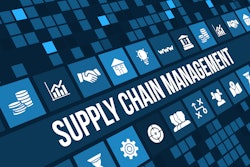
Recent years have seen a jump in companies making significant investments in U.S. manufacturing. New tariff pressures under the Trump administration are adding fuel to this shift, with the ensuing disruption and uncertainty driving an increased emphasis on reshoring.
But, despite their headline-grabbing volume, a large investment in reshoring is not necessarily the strategic advantage (or necessity) it might seem to be. As many as 70% of major change initiatives, including reshoring efforts, fall short of their stated goals. It may be tempting to blame supply chain woes or other sources of instability for this low success rate, but in reality, the cause is often poor change management and lack of organizational agility. Manufacturing companies are reshoring their operations to protect their supply chains, grow productivity, and reduce costs. But if they treat this process like moving equipment — instead of organizational transformation — they may be putting billions of dollars at risk.
Critical blind spots
A supply chain is only as strong as its weakest link, and the same is true of major change initiatives. Leaders that focus too much on the operational side of reshoring, while overlooking some common, people-focused blind spots, are not setting themselves up for success.
Workforce transition and change management neglect. Reshoring represents a major transition, and leaders must take intentional care to help their workforce navigate it. As operations move to a new geographic region, skilled overseas workers may express feelings of abandonment, while domestic workers may feel unprepared. It’s easy for leaders to assume, “If we build it, they will adapt,” but the reality will not be so simple.
Different countries of origin bring different work expectations, communication styles, and performance standards, and a successful transition needs these disparate modes of working to thrive alongside each other. Responsibilities will need to be handed off across teams and borders, and new work scopes will need to be defined for domestic employees. Having access to the institutional knowledge of their international peers will be invaluable, but it’s up to leaders to facilitate that communication and coordination.
The present talent shortage within the manufacturing industry makes these workforce considerations even more important. As companies look to bring more manufacturing back to the US, it’s paramount to consider what will attract the workforce necessary – paired with embracing technological innovations – to limit productivity losses when new plants go online. Organizational resistance or inertia can stymie reshoring efforts just as severely as faulty supply chain logistics. In these cases, the cost of failure can be high — potentially billions, depending on the size of a company’s reshoring investment.
Leadership alignment. Failure to instill a sense of unity and direction can impact the morale and productivity of employees, but a lack of alignment among organizational leadership can also bring negative impacts.
Company leaders must be able to articulate why they are pursuing reshoring. What do they hope to gain and how will it benefit their customers, employees, distributors, and shareholders? Setting clear goals will enable teams to shape a reshoring strategy around clear outcomes. It will also enable leaders to balance the expectations of various interest groups, like investors and employees. Reshoring can be an expensive and lengthy process, even under ideal circumstances. Investors will understandably desire to keep costs down whenever possible. But cost-saving measures should be designed in a way that does not negatively impact other change management initiatives or other strategic outcomes. If short-term cost savings are allowed to come at the expense of long-term investments in sustainable cultures, processes, and systems, the business may become less flexible and change friendly. It may be less able to adapt to future industry disruptions.
Creating engagement and leadership at all levels of the organization provides the best defense against such an outcome. High-level executives often underestimate the hidden human complexities when reshoring and should take steps to stay connected with employees at all levels of the business. When addressing questions around top-level alignment, leaders should pay special attention to their middle management teams. Just as low employee morale can impact long-term productivity, middle managers who feel caught between competing or poorly articulated sets of priorities will be less effective in carrying out their roles and addressing the concerns of the employees they oversee.
4 steps to level up change management
Manufacturing leaders need to treat reshoring efforts as a large-scale transformation effort, and much adequately invest in operational and infrastructure shifts and change management from the outset. They can take concrete steps to improve their approach to change management and enhance their productivity and resilience in the process.
1) Create people-focused urgency: Reshoring, like any change initiative, will include risk management planning. Manufacturing leaders are likely already accounting for risks stemming from geopolitical instability or supply chain disruptions, but they should also include workforce resilience under this umbrella and adopt concrete mitigation strategies. For instance, frame reshoring as more than just a cost-savings endeavor in internal communications. It also represents the next stage of manufacturing excellence for a company, potentially bringing new customer benefits like faster delivery times and more competitive pricing.
2) Build cross-functional coalitions: Reshoring affects the entire company, so the entire company should be represented during the planning stages. Including HR leaders, plant managers, union leaders, and community stakeholders from day one can help bridge overseas and domestic operations more quickly, fostering cross-cultural buy-in and communications.
3) Generate quick wins: Calling out early wins in companywide communications can be an effective way to demonstrate success throughout an organization. Progress points toward infrastructure or financial goals are important markers of success and can help provide a sense of forward momentum. Effective leaders will place a special focus on highlighting individual employee transformations and skill developments, giving staff the ability to celebrate with their peers and demonstrating the possibilities and opportunities created by reshoring.
4) Embed change in company culture: Change initiatives are more successful when individuals throughout the company feel able to contribute and feel confident that their contributions matter. Updating performance metrics to include workforce development outcomes can help reinforce this new approach. For example, a reward structure for managers focused on successful people transitions can give teams a sense of ownership and participation. They are not simply being pulled along but actively shaping the results.
Reshoring is a complex and lengthy process, and manufacturing leaders must budget for change management as seriously as they do for new equipment or facilities. Ultimately, companies that master the people side of reshoring will gain a head start over their competitors and will build more durable and agile organizations.

















